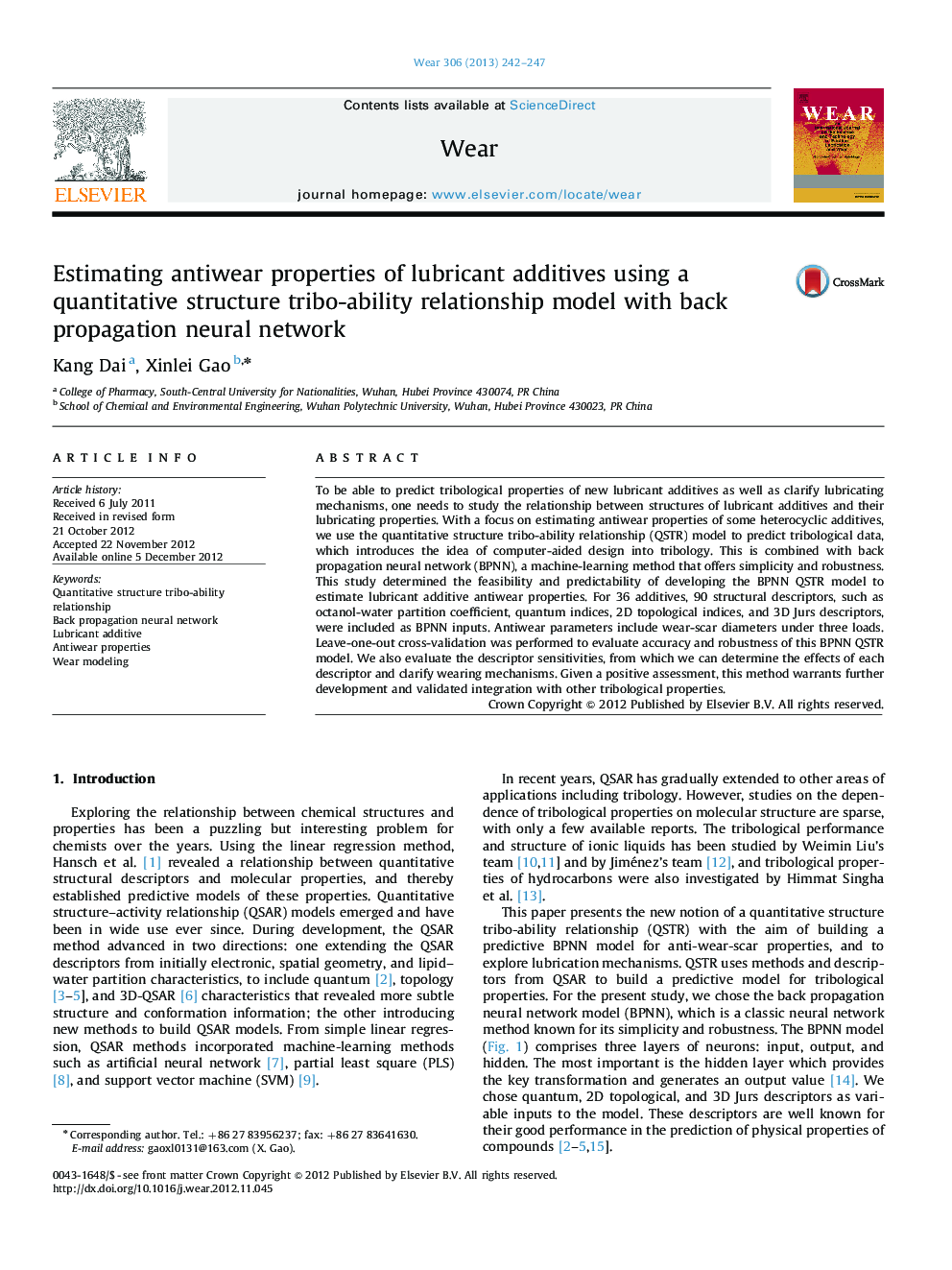| کد مقاله | کد نشریه | سال انتشار | مقاله انگلیسی | نسخه تمام متن |
|---|---|---|---|---|
| 617622 | 1454996 | 2013 | 6 صفحه PDF | دانلود رایگان |

To be able to predict tribological properties of new lubricant additives as well as clarify lubricating mechanisms, one needs to study the relationship between structures of lubricant additives and their lubricating properties. With a focus on estimating antiwear properties of some heterocyclic additives, we use the quantitative structure tribo-ability relationship (QSTR) model to predict tribological data, which introduces the idea of computer-aided design into tribology. This is combined with back propagation neural network (BPNN), a machine-learning method that offers simplicity and robustness. This study determined the feasibility and predictability of developing the BPNN QSTR model to estimate lubricant additive antiwear properties. For 36 additives, 90 structural descriptors, such as octanol-water partition coefficient, quantum indices, 2D topological indices, and 3D Jurs descriptors, were included as BPNN inputs. Antiwear parameters include wear-scar diameters under three loads. Leave-one-out cross-validation was performed to evaluate accuracy and robustness of this BPNN QSTR model. We also evaluate the descriptor sensitivities, from which we can determine the effects of each descriptor and clarify wearing mechanisms. Given a positive assessment, this method warrants further development and validated integration with other tribological properties.
► We study the relationship among additive structures and their lubricating properties.
► The quantitative structure tribo-ability relationship (QSTR) model is used.
► We use a back-propagation neural network (BRNN) QSTR model.
► The descriptor sensitivities of BRNN QSTR model are evaluated.
► The effects of each descriptor and clarify wearing mechanisms are determined.
Journal: Wear - Volume 306, Issues 1–2, 30 August 2013, Pages 242–247